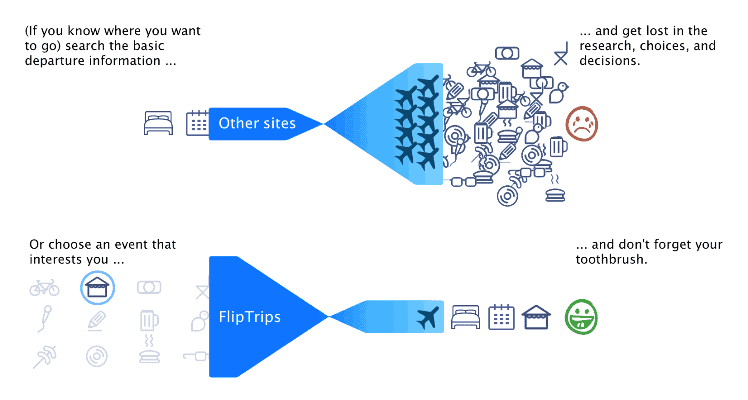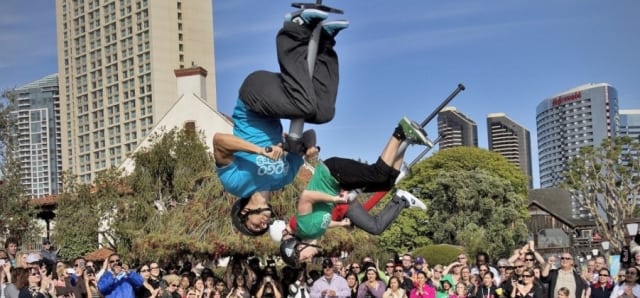Amazing, bizarre, exciting, and inspirational – these are the experiences that make it onto a traveller’s bucket-list. Serious planners curate their lists for years in anticipation of ticking them off, but if you’ve ever tried to build your own bucket-list you’ll know how tricky it can be.
That’s the problem startup founder Gideon Birns decided to solve with the site FlipTrips. There are many established sites like TripAdvisor, but lots of information doesn’t necessarily mean a better experience.
“It’s information overload! There is lots of detail but you need hours to sift through it all,” Gideon told Australian Times.
For those of us short on ideas, time, or planning ability, it becomes a chicken and egg situation, says the young Aussie entrepreneur .
“You don’t know what’s out there, and to find what’s out there you need to know what you’re looking for. Often you find out about these amazing trips the day after it happens from a friend’s Facebook page or a news article. The goal of FlipTrips is to make it easy to find and book exciting trips.”

The development of FlipTrips
FlipTrips was inspired by a discussion between Gideon and a friend. It turned out they had different views of an ideal trip which led to the realization of catering to a specific type of traveller.
For Gideon, travel is about finding expressions of a culture that immerse you in the destination.
“Of course it’s possible to participate in regular activities, but what could be more immersive than participating in a festival? These types of events create a vibe and openness to local culture that’s not ordinarily seen,” he says.
This led to the idea of an online bucket-list of annual events, such as the Venice Carnivale and the Worlds Buskers Festival, with one-click booking functionality.
Why the name FlipTrips?
After trying a number of different names this one stuck for a few reasons, Gideon explained. Most travel sites first require a known destination then promotes activities after a destination is searched. However, FlipTrips starts with the activities which once selected, leads to the destination.

The name also stuck because the site is quick to use and this type of travelling lends itself to short city breaks and weekend trips. However, Gideon is quick to point out it’s possible to use FlipTrips to book chains of trips for event-hopping.
How it works
The interface is a clean and friendly vertical list of events, each with a photo and brief description with key information such as official event dates. Suggested travel dates take advantage of weekends where possible, and these can be linked and unlinked to the booking search. The list is chronologically ordered and filtered by activity type, region, and month.
The layout makes it very easy to find something interesting but does not provide much opportunity to dig deeper.
“There is definitely an opportunity to add more information in later versions of the site – but I don’t want to lose sight that this is a summary and a bucket-list that will attract travellers as a first point of call,” Gideon says.
Once a traveller is interested in an event they can click a booking button to find the ‘top three results’ for flights and hotels or link to a full set of results. The top three results are found with and algorithm that applies a number of filters simultaneously.
“It bothered me that booking sites when filtered on price, produced red-eye flights or low rating hotels. The top 3 results mix filters to display the cheapest of the best (or the best of the cheapest),” he explains.
While not a key differentiator of the site it’s a novel approach worth checking out.
A shift in the online travel market?
FlipTrips addresses a subtle trend that’s been occurring in the online travel industry – getting involved earlier in a traveller’s decision making process.
A few years ago most travel websites were either a booking tool like Opodo, or a research tool like TripAdvisor. More recently, established sites added headlines and links such as ‘Inspire Me’, ‘Search Any Destination’, ‘Best of’, and ‘Follow your Friends’. These steps were designed to inspire destinations and create an end-to-end service.
So how does FlipTrips compete with established travel sites that are now expanding their offerings?
“Although the trend is obvious, it’s effect on website design and user experience has been minimal,” Gideon says, pointing out there are no established sites that are designed from the ground up to cater for this trend.
“It’s mostly been small changes that encourage users to view established websites in a new light.“
Whether FlipTrips has created the right recipe remains to be seen.
“There’s a lot to learn and I’m looking forward to providing something new and useful for my customers,” he enthuses.
You can check this new travel site at www.fliptrips.com












